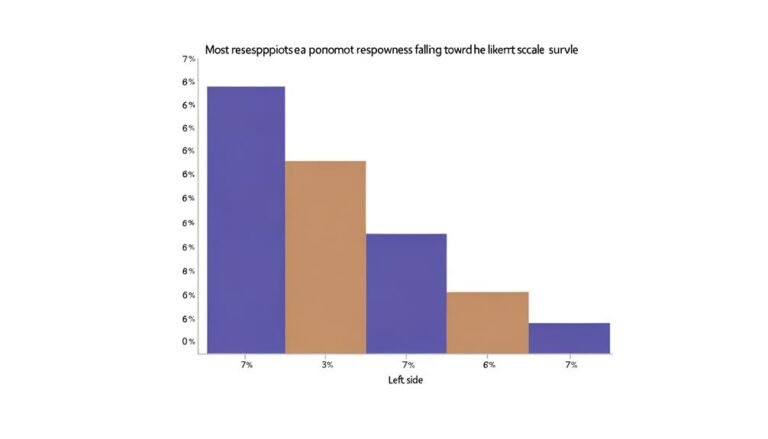Streamlined Strategies for Effective Needs Assessment
In the intricate landscape of organizational development, the pursuit of efficient needs assessment methodologies stands as a cornerstone for informed decision-making and targeted interventions.
As professionals navigate the complexities of aligning organizational needs with strategic initiatives, the allure of streamlined strategies for needs assessment emerges as a beacon of promise.
By shedding light on the intricacies of optimizing this crucial process, this discourse sets the stage for a nuanced exploration of how organizations can elevate their practices to drive impactful change and foster a culture of continuous improvement.
Key Takeaways
- Engage key stakeholders early for effective needs assessment.
- Utilize diverse data collection methods for comprehensive insights.
- Ensure clear communication of findings for actionable recommendations.
- Continuously evaluate and adapt the process for lasting impact.
Key Questions for Effective Needs Assessment
In conducting an effective needs assessment, asking key questions is paramount to pinpointing underlying issues and formulating targeted solutions. Root cause analysis plays a crucial role in identifying the fundamental reasons behind a problem by employing techniques like the 5 Whys.
Performance metrics are essential in this process to quantitatively measure the gap between current and desired outcomes. By aligning solutions with metrics important to clients, such as time, quality, cost, and output, organizations can tailor interventions effectively.
Understanding the performance gap through metrics allows for a focused approach to address the specific areas needing improvement. Utilizing these analytical tools ensures that needs assessment efforts are data-driven and lead to actionable insights for enhancing organizational performance.
Benefits of Streamlined Strategies
Efficient strategies in needs assessment offer a multitude of benefits for organizations seeking to enhance performance and productivity. By streamlining the assessment process, organizations can experience improved efficiency and enhanced outcomes. This approach not only saves time but also ensures that resources are allocated effectively to address the identified needs. Below is a table highlighting the key benefits of streamlined strategies in needs assessment:
| Benefits | Description |
|---|---|
| Time-saving | Reduces the time required for data collection and analysis, allowing for quicker decision-making. |
| Resource optimization | Ensures resources are efficiently utilized to address the identified needs, leading to cost-effectiveness. |
| Increased stakeholder engagement | Streamlined strategies encourage active participation from stakeholders, enhancing buy-in and support. |
| Enhanced decision-making | Provides clear and concise data for informed decision-making, leading to more effective solutions. |
| Improved organizational performance | Enhances overall performance and productivity by addressing critical needs efficiently. |
Data Collection Methods for Efficiency
Utilizing diverse data collection methods is pivotal for enhancing the efficiency of needs assessment processes within organizations. Surveys and interviews offer valuable insights into stakeholders' perspectives, attitudes, and requirements. Surveys allow for standardized data collection, enabling quantitative analysis, while interviews provide in-depth qualitative data.
Observational analysis complements these methods by offering direct insight into behaviors, interactions, and processes within the organizational context. By combining surveys, interviews, and observational analysis, organizations can gain a comprehensive understanding of needs, facilitating targeted and effective solutions.
This multi-faceted approach ensures that data is collected from various angles, enhancing the accuracy and reliability of the needs assessment process while streamlining the path to effective interventions.
Addressing Challenges Proactively
Proactively addressing challenges in needs assessment is essential for ensuring the effectiveness and efficiency of organizational interventions. To overcome obstacles, organizations can implement proactive solutions such as involving key stakeholders from the beginning and communicating findings clearly. It is crucial to address resistance to change, lack of stakeholder buy-in, insufficient resources, time constraints, and difficulty in measuring intangible needs. By taking proactive measures, organizations can streamline the needs assessment process and improve the overall outcome of interventions. The table below highlights key proactive solutions for addressing challenges in needs assessment:
| Proactive Solutions | Overcoming Obstacles |
|---|---|
| Involve key stakeholders from the start | Address resistance to change |
| Communicate findings clearly | Gain stakeholder buy-in |
| Utilize varied data collection methods | Allocate sufficient resources |
| Ensure confidentiality and anonymity | Manage time constraints effectively |
Implementing Best Practices Successfully
Implementing best practices successfully in needs assessment requires a systematic approach that incorporates key stakeholder involvement, varied data collection methods, clear communication of findings, and meticulous evaluation and adaptation throughout the process. To achieve this effectively, consider the following strategies:
- Engagement Strategies:
- Engage stakeholders actively from the outset.
- Foster open communication channels for feedback.
- Implementation Tactics:
- Utilize a combination of data collection methods.
- Regularly assess progress and adjust strategies as needed.
Enhancing Stakeholder Engagement
To enhance stakeholder engagement effectively in needs assessment, a strategic approach involving active participation and transparent communication is essential. Engaging stakeholders from the outset ensures their buy-in, leading to more accurate needs identification and effective solutions. Communication strategies such as regular updates, clear reports, and interactive sessions can facilitate stakeholder involvement and commitment throughout the assessment process. By fostering a collaborative environment and valuing stakeholder input, the needs assessment can benefit from diverse perspectives and insights. The table below outlines key strategies to enhance stakeholder engagement in needs assessment:
| Stakeholder Involvement Strategies | Communication Strategies | Benefits |
|---|---|---|
| Involve stakeholders from the start | Provide regular updates | Ensures buy-in and commitment |
| Encourage active participation | Communicate findings clearly | Facilitates accurate needs identification |
| Seek feedback and input | Conduct interactive sessions | Fosters a collaborative environment |
Continuous Improvement in Assessment Process
The enhancement of the assessment process's continuous improvement relies on meticulous analysis and strategic adjustments based on data-driven insights. To achieve continuous refinement and process enhancement, organizations can implement the following steps:
- Conduct regular reviews of assessment methodologies to identify areas for improvement.
- Utilize feedback from stakeholders to adapt assessment processes to changing needs.
- Implement technology-driven solutions to streamline data collection and analysis.
- Establish key performance indicators to track the effectiveness of assessment efforts over time.
Conclusion
In conclusion, the strategic utilization of streamlined approaches in needs assessment facilitates a more efficient and targeted process for identifying and addressing organizational gaps.
By embracing data-driven decision-making and proactive problem-solving, organizations can enhance stakeholder engagement and drive continuous improvement.
Through the implementation of best practices and the proactive anticipation of challenges, the assessment process becomes a catalyst for organizational growth and success.





